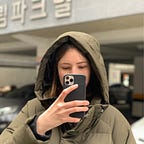Our next plan of action was to figure out how to organise the sections from my brainstorm last week.
I thought about how the information would look, and how it could be structured in a digital system. Seeing as elements within a conversation are all linked, I needed to carry on these connections in the design:
I liked the structure a grid provided as it also enables a complex navigation system, with layers and depth. However, I had still not planned how the design would work with actual pieces of information.
To help myself start thinking it through, I begun by planning how it might work with individual words. Nouns are easy to contextualise, so I was keen to complexify by exploring how words could be placed depending on their relation to nearby words e.g. a basic example would be the word lovely, which I placed next to cat. This was an attempt to see words in relation to connected concepts. When a word is selected, other, non-related ones would fade out of focus to highlight those that are connected.
However, this got me thinking about the importance of seeing in contrast as well. Surely it is just as important to see words in relation to what they are not, to help understand their meaning? I tried to loosely prototype this aspect, however decided to leave it until I had spoken to the group.
Feedback
We met with John for a mid-week tutorial and he criticised our reliance on vocabulary, saying that this use case would be unlikely unless the individual was learning language in a formal way e.g. at school with vocabulary homework — for which we were not planning. He noted that the strength lies in different types of content, and asked us to consider the different ways for representing the recall for those things e.g. a tense would have a different way of being recalled to a sentence structure etc. He added that our designs lacked criticality, and didn’t cover their potential. It has been over simplified — too reduced.
Our group discussed this after the call, and agreed with his criticisms. We focused our target audience on those that are learning language informally, and begun discussing ways we could design a contextually-driven way of organising content — something different to just flipping back pages in a book.
Next steps
We decided to make a new aim, to help focus our next steps:
To create a scenario driven retrieval system for people who are learning a language informally.
We wanted to make a product that would enable the learner to bring in different information of their own, and create their own scenarios. However, to do this we still needed a better understanding of how the information would be structured.
We each thought of our own scenarios, and thought of what might be said within them. We expanded our wireframes to consider trickier subject matter than individual words to properly explore our ideas. In trying to make the idea real, I found it difficult to incorporate images, and other forms of visual context — finding them feeling superficial, or uninformative.
This would be something I focus on next week, as this was an important aspect to the experience that I did not want to lose.
>>> For my next post on the project, click here.
